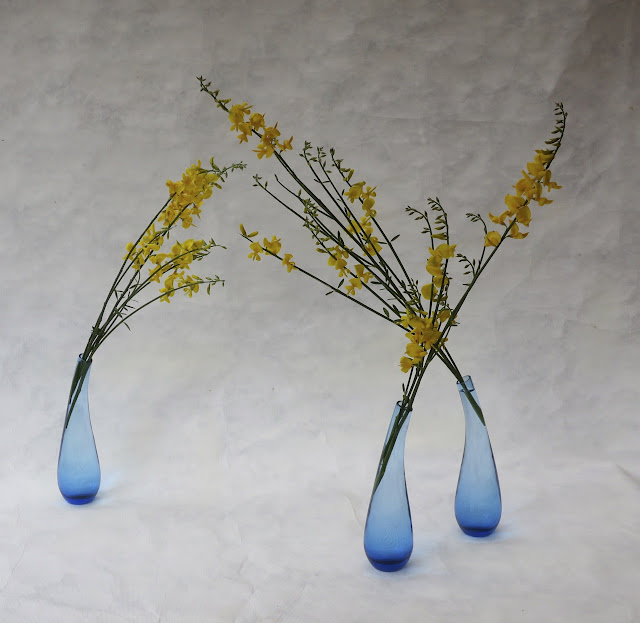As we sat down to dinner a couple of nights ago, I noticed a couple of magpies fussing around in an odd way in the garden. On closer investigation I saw what had caught their interest.
Spike, the echidna, was in the garden looking for ants. I have never seen such interest from magpies before and was wondering if they were hoping that Spike might also unearth some worms for them. The magpies kept a short distance from the echidna and finally flew off when they became aware of my presence.
In the meantime, Spike seemed to be rather oblivious of the magpies and me and continued his search for his preferred food.
On the ikebana front, here are two student photos to share with you.
Jacqueline created this ikebana a couple of months ago. Her exercise, from the advanced part of the Sogetsu curriculum, was to make an ikebana that takes into account the shape of the vase. She has created curved lines with a vine to echo the spherical vase. The small mass of white Azeleas acts as a focal point in the arrangement.
Ellie made the ikebana arrangement below on a topic that I set.
The students were asked to create a sculpture and then add some fresh material. Ellie has used wire mesh that she cut into different shapes and coloured: yellow, rust pink or left uncoloured. The fresh material is a variegated Hosta leaf and the yellow-flowering Jerusalem sage, Phlomis fruticosa.
Ellie said that she took her inspiration from this photo of a hat in the collection of the National Gallery of Victoria. The hat is by the Melbourne-based milliner Melissa Jackson. It is worth noting that inspiration may come from anywhere and ikebana practitioners are encouraged to engage with other creative arts as well as the natural world.
My own ikebana this week could be seen as a rather wild extension of millinery as inspiration. However, that was not the case. My eye had been caught by a single flower of a Red Hot Poker, Kniphofia uvaria (I think) growing wild. I have since learnt that it is classified as an environmental weed in some places. The flower inflorescence has an eye-catching intensity.
The leaves of this particular variety of Kniphofia are long and broad however they are rather weak. In my ikebana I set the flower stem at an angle to emphasise the slight bend in the stem; two days later, the flower head had lifted upright. The leaves are Costal sword sedge, Lepidosperma gladiatum, which I have arranged in large open loops to give a counter-balancing volume to the line.
Greetings from Christopher
22nd November 2020

























